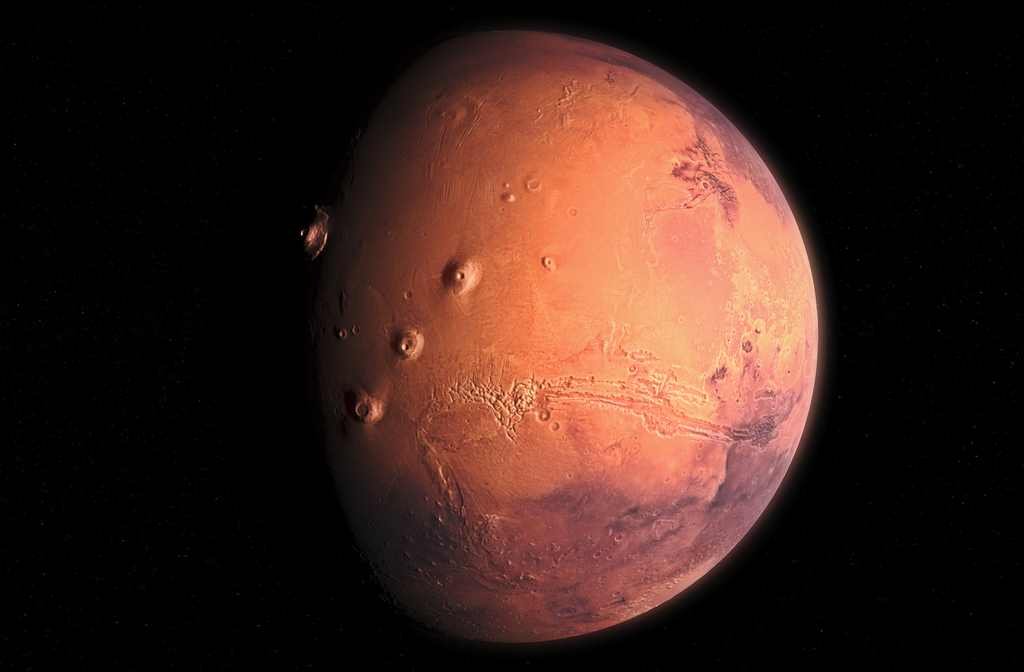Elon Musk confirms that SpaceX will send a Starship rocket for its first mission to Mars in 2026

According to the tycoon, Tesla’s humanoid robot Optimus will be on board at the launch; he assured that if everything goes well, the first humans could be stepping on the “red planet” in 2029
Elon Musk has announced that SpaceX will launch its Starship spacecraft to Mars at the end of 2026, on a mission that will include Optimus, Tesla’s humanoid robot. If the operation proves successful, the billionaire estimates that the first humans could set foot on the red planet in 2029, although he acknowledged that 2031 is a more realistic date.
The aerospace company has developed Starship as the largest and most powerful rocket in history, with a payload capacity of up to 150 tons in reusable mode and 250 tons in expendable mode, according to Fox News. However, despite Musk’s ambitious plans, the company still faces technical challenges, including recent test explosions that have forced the Federal Aviation Administration (FAA) to require investigations before authorizing new launches.
Musk’s announcement comes in the midst of an intense week for SpaceX, which has just sent a new crew to the International Space Station (ISS) on a mission coordinated with NASA. One of the goals of this mission is to replace astronauts Butch Wilmore and Suni Williams, who have been in space for more than nine months due to failures in Boeing’s Starliner spacecraft.
SpaceX’s plan to colonize Mars
Musk has repeatedly expressed his desire to turn Mars into a self-sustaining civilization. According to him, this is an existential necessity in case a disaster on Earth threatens the survival of humanity. “If there is something terrible happening on Earth, whether caused by humans or by nature, we want to have a kind of life insurance for life as a whole,” the entrepreneur declared in 2020, Forbes recalled.
The billionaire has mentioned that his long-term goal is that “anyone can travel to Mars if they want,” and in a meeting with SpaceX employees, he would have expressed his vision of seeing a million people inhabiting the planet by the 2040s. To do this, he proposes the use of Tesla solar panels to generate electricity and provide heating, as well as other solutions to overcome the environmental challenges of Mars, such as its extremely low temperatures and water scarcity.
Technical challenges over the years
Despite Musk’s enthusiasm, SpaceX faces difficulties in achieving its goals. In recent months, the company has suffered two explosions in Starship tests, the most recent just a few days ago, when the rocket lost several engines and ended in an “unscheduled disintegration.”
Such failures have been recurrent in the history of SpaceX, and although Musk has described these incidents as “small setbacks” that help improve the technology, the FAA has demanded an investigation before allowing new launches, BBC reported. The regulatory agency has made it clear that SpaceX will have to solve the problems before obtaining a new flight authorization.
Musk’s track record with deadlines and promises has been inconsistent. In 2016, he assured that he would send humans to Mars in 2024, something that did not happen. In 2017, he promised private flights around the moon by 2018, which also did not come to fruition. Even its self-driving car project, the Tesla Cybercab, has suffered repeated delays and is not yet available, Forbes highlighted.
While Musk has made significant strides in the space and automotive industries, experts warn that his estimates are often too optimistic. In this case, the 2026 deadline for sending Starship to Mars could be affected by the complexity of technological development and government regulations.
Astronauts stranded on the ISS
In parallel to the Mars project, SpaceX is involved in another crucial mission: the return of astronauts Butch Wilmore and Suni Williams, who have remained on the ISS for more than nine months due to failures in Boeing’s Starliner spacecraft.
The astronauts were sent into space on June 5, 2024, with the expectation of returning to Earth eight days later. However, problems with the thrusters and helium leaks have prevented its safe return, forcing NASA and Boeing to postpone its return indefinitely, according to Fox News.
To solve the situation, SpaceX and NASA have launched a new crew to the ISS, with the aim of replacing Wilmore and Williams and preparing for their eventual return.






